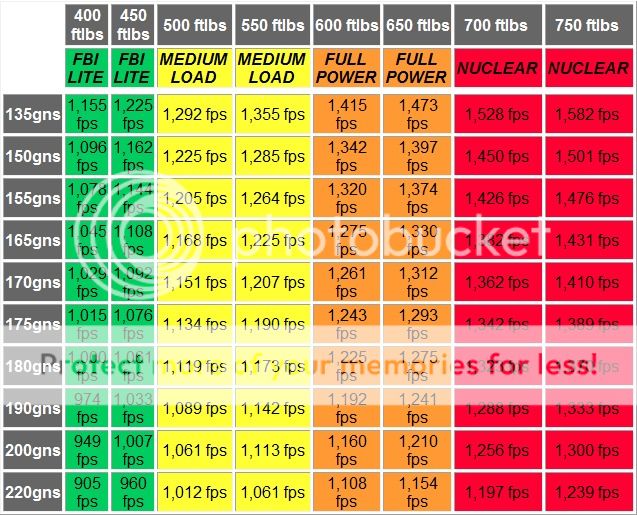mrbladedude
Member
Ive shot 20 rounds of Underwood hard cast 220 grain 10mm
Muzzle Velocity 1200 fps
Muzzle Energy 703 ft. lbs
I thought it would be snappier. Its a nuclear round according to this chart.

Dont get me wrong I'm glad it isnt more snappy since its my carry load. However it got me wondering if there is a snappier/hotter round maybe a hollowpoint weighing less and moving faster? Like a 135 grain travelling at 1500 fps?
Muzzle Velocity 1200 fps
Muzzle Energy 703 ft. lbs
I thought it would be snappier. Its a nuclear round according to this chart.

Dont get me wrong I'm glad it isnt more snappy since its my carry load. However it got me wondering if there is a snappier/hotter round maybe a hollowpoint weighing less and moving faster? Like a 135 grain travelling at 1500 fps?

